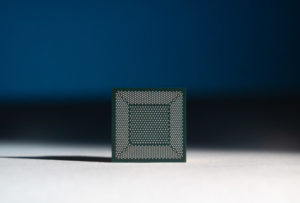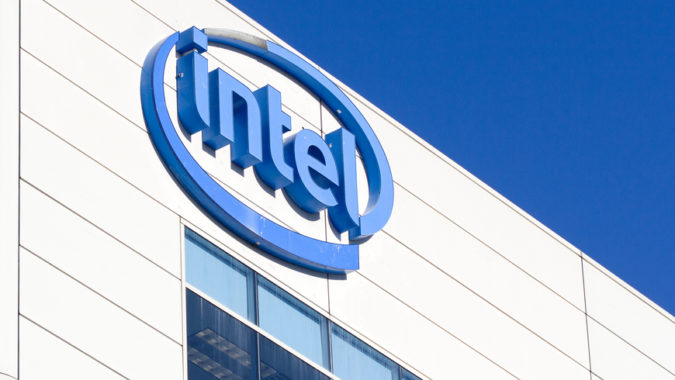After facing setbacks in its semiconductor execution, including a delay in its 7nm node, Intel is announcing two partnerships with U.S. national labs that reaffirm its commitment to advanced computing: first, a partnership with the DOE and the national labs that focuses on developing next-generation semiconductors and manufacturing techniques; and second, a partnership with Sandia National Laboratories to test the scale-up potential of neuromorphic computing.
Creating the next generations of semiconductors, manufacturing and computing
Intel’s new general partnership with the DOE and U.S. national labs is a “long-term agreement” – 10+ years – that will aim to “further support the United States’ leadership in advanced computing systems, including exascale, neuromorphic and quantum computing.” The practicalities of the partnership are far more specific, with Intel and the national labs working to create “next-generation semiconductor technologies, manufacturing processes, advanced system design and software enablement.”
The deal is still in its early stages; at the moment, task forces composed of researchers from Intel, the DOE and Argonne National Laboratory are working out the particulars of the program’s initiatives. Even in these early stages, however, the task forces are guided by three core focus areas: first, future silicon development R&D, including materials science and system-level modeling techniques; second, collecting architecture co-design requirements that will enable researchers to build the “next several generations” of HPC and AI architectures; and finally, software ecosystem development for exascale computing through the Aurora Center of Excellence. This final focus area will involve expanding open standards to “enable the broad use of Intel CPUs and GPUs” (along with other accelerators) in exascale applications.
Scaling up neuromorphic computing

Intel’s neuromorphic chip, which aims to directly mimic the behavior of the human brain, has already learned to smell, to touch, and even to assist children who use wheelchairs. Intel is currently on the fifth generation of its neuromorphic efforts – a chip named Loihi, introduced in 2017. Earlier this year, Intel scaled Loihi up into a system called Pohoiki Springs, a behemoth containing 768 Loihi chips, each with 128 cores and around 131,000 simulated computational “neurons” (totaling some 100 million digital neurons system-wide). Pohoiki Springs is very much a trial balloon, if a large one – it was initially made available only to members of the Intel Neuromorphic Research Community (INRC) via cloud.

Intel’s latest scaled-up neuromorphic system deployment, however, will be another story entirely. Through a three-year agreement with Sandia National Laboratories, Intel will supply a Loihi-based system to “lay the foundation for the later phase of the collaboration”: large-scale research on Intel’s forthcoming neuromorphic architecture and the delivery of Intel’s largest neuromorphic system to date. While that first system will amount to some 50 million computational neurons (and presumably contain around 384 Loihi chips), the latter system “could exceed … one billion neurons in computational capacity” – the equivalent of over 7,600 Loihi chips – “if research progresses as expected.”
Intel’s rapid scale-up of neuromorphic computing in the past several years signals confidence in the novel technology – confidence that Intel believes is well-earned, given early results that it says demonstrate energy efficiency on Pohoiki Springs that is four orders of magnitude better than state-of-the-art CPUs. Sandia, for its part, aims to identify the areas where neuromorphic computing can best be applied to help address some of the most pressing issues in the U.S., such as energy and national security.
“By applying the high-speed, high-efficiency and adaptive capabilities of neuromorphic computing architecture, Sandia National Labs will explore the acceleration of high-demand and frequently evolving workloads that are increasingly important for our national security,” said Mike Davies, director of Intel’s Neuromorphic Computing Lab. “We look forward to a productive collaboration leading to the next generation of neuromorphic tools, algorithms, and systems that can scale to the billion neuron level and beyond.”
 To put Intel’s neuromorphic computing through its paces, Sandia will evaluate the scaling of a variety of spiking neural network workloads, ranging from physics modeling to large-scale deep networks, that serve as good indicators for the chips’ suitability for particle interaction simulations. Sandia National Laboratories is one of the three national laboratories serving the National Nuclear Security Administration (NNSA), which – as the steward of the nation’s nuclear weapon stockpile – is particularly interested in particle and fluid simulations, and just announced another major supercomputer from HPE (powered by forthcoming Sapphire Rapids Xeons).
To put Intel’s neuromorphic computing through its paces, Sandia will evaluate the scaling of a variety of spiking neural network workloads, ranging from physics modeling to large-scale deep networks, that serve as good indicators for the chips’ suitability for particle interaction simulations. Sandia National Laboratories is one of the three national laboratories serving the National Nuclear Security Administration (NNSA), which – as the steward of the nation’s nuclear weapon stockpile – is particularly interested in particle and fluid simulations, and just announced another major supercomputer from HPE (powered by forthcoming Sapphire Rapids Xeons).
“Sandia National Labs has long been at the leading edge of large-scale computing, using some of the country’s most advanced high-performance computers to further national security. As the need for real-time, dynamic data processing becomes more pressing for this mission, we are exploring entirely new computing paradigms, such as neuromorphic architectures,” said Craig Vineyard, principal member of the technical staff at Sandia. “Our work has helped keep Sandia National Labs on the forefront of computing, and this new endeavor with Intel’s Neuromorphic Research Group will continue this legacy into the future.”
These two Intel/government partnerships were actually accompanied by a third; Intel has also secured its second military chip contract, through which it use its packaging technology to help the U.S. military develop chip prototypes.
To read more about recent developments in Intel’s exascale system development and neuromorphic computing advances, visit one of the articles below:
Aurora’s Troubles Move Frontier into Pole Exascale Position
Intel’s Neuromorphic Chip Scales Up (and It Smells)
Get a Grip: Intel Neuromorphic Chip Used to Give Robotics Arm a Sense of Touch
Neuromorphic Computing to Assist Children Who Use Wheelchairs





























































